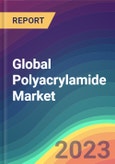Quick Summary:
In the ever-evolving global landscape, maintaining a keen understanding of pivotal industries is crucial - specifically with regards to the polyacrylamide (PAM) market. Being a polymer with a linear-chain structure, synthesized via a chemical reaction between acrylamide and acrylic acid, PAM’s water-soluble nature and broad application scope across diverse sectors have led to its significant growth. This growth is principally driven by PAM’s role in wastewater treatment and oil recovery, both trending amidst the increasing consciousness regarding water scarcity and the need to maximize existing oil reserves.
Lending to these observations, it is safe to conclude that PAM's application in across sectors will increase substantially in the foreseeable future. Gain an edge over competitors by staying ahead of the curve with our comprehensive market research report, providing a deep dive into the global demand, application, and key players in the PAM industry. With its strong emphasis on the Asia Pacific region, the pre-eminent consumer of PAM, this report is an indispensable asset for serious stakeholders to make informed decisions and strategize for success.
The global Polyacrylamide (PAM) market has shown a remarkable expansion in the historic years and expanded to reach approximately 2500 thousand tonnes in 2021 and is expected to grow at a healthy CAGR of 6.27% during the forecast period until 2032.The Global Polyacrylamide (Pam) Market Has Shown a Remarkable Expansion in the Historic Years and Expanded to Reach Approximately 2500 Thousand Tonnes in 2021 and is Expected to Grow at a Healthy CAGR of 6.27% During the Forecast Period Until 2032
Polyacrylamide (PAM) is a polymer with a linear-chain structure. This polymer is synthesized by a chemical reaction between acrylamide and acrylic acid. It is water-soluble in nature which drives its applications in multiple industries. PAM comes in powder, liquid, and emulsion form and is a valuable agent in various applications. Solid particles present in a liquid can be coagulated or flocculated with the help of polyacrylamide due to which it finds its application in water treatment. Polyacrylamide is frequently used in petroleum applications worldwide to promote oil recovery due to its property to turn water more viscous. Polyacrylamides also have applications in the agriculture sector. Polyacrylamides tend to bind soil particles, particularly clays, to keep them in place, which helps with erosion control and reduces soil sealing. Polyacrylamide is frequently employed in the processing of minerals in mining operations to extract minerals.
Owing to the reducing freshwater reservoirs, new techniques are being developed to treat wastewater all across the world. The market for polyacrylamide is anticipated to be driven in the near future by rising awareness regarding wastewater treatment and the ensuing expansion of the coagulants & flocculants market. Polyacrylamide possess ionic characteristics due to which it works as an excellent coagulating and flocculating agent. Additionally, methods for maximizing oil recovery are being used to increase oil reserves, decreasing the need to locate new oil fields. Since, polyacrylamides function as an oil-field yield enhancers, it is anticipated that in the forthcoming years this will further fuel the demand of polyacrylamide. The global Polyacrylamide (PAM) demand is anticipated to reach nearly 4800 thousand tonnes by 2032.
Asia Pacific region dominates the Polyacrylamide (PAM) market in terms of consumption. As of 2021, this region consumed approximately 50% of the global PAM market. Over the next few years, it is anticipated that growing polluted water discharge from industries and a shortage of drinkable water would boost demand for polyacrylamide in water treatment applications in the Asia Pacific region. Furthermore, China is the leading producer of PAM followed by USA.
Based on the end-use, the global Polyacrylamide (PAM) market is segregated into Water Treatment, Enhance Oil Recovery, Pulp & Paper, Mineral Processing, and Others. Although, Water Treatment is the leading segment of Polyacrylamide market. This segment a market share of approximately 35% in 2021. Other leading consumers of PAM are Enhance Oil Recovery and Pulp & Paper industries.
Major players in the production of Global Polyacrylamide (PAM) are SNF Floerger Group, BASF, Anhui Jucheng Fine Chemicals Co., Ltd., Xitao Polymer Co., Ltd, Kemira Oyj, Black Rose Industries Limited, Wuxi Tianxin Chemicals Co., Ltd., Tianrun Chemicals, China National Petroleum Corporation, and others.
Years considered for this report:
- Historical Period: 2015- 2021
- Base Year: 2021
- Estimated Year: 2022
- Forecast Period: 2023-2032
Objective of the Study:
- To assess the demand-supply scenario of Polyacrylamide (PAM) which covers production, demand and supply of Polyacrylamide (PAM) market in the globe.
- To analyse and forecast the market size of Polyacrylamide (PAM)
- To classify and forecast Global Polyacrylamide (PAM) market based on end-use and regional distribution.
- To examine competitive developments such as expansions, mergers & acquisitions, etc., of Polyacrylamide (PAM) market in the globe.
The publisher calculated Polyacrylamide (PAM) demand in the globe by analyzing the historical data and demand forecast which was carried out considering the historical supply and demand of Polyacrylamide (PAM) across the globe. The publisher sourced these values from industry experts, and company representatives and externally validated through analyzing historical sales data of respective manufacturers to arrive at the overall market size. Various secondary sources such as company websites, association reports, annual reports, etc., were also studied by the publisher.
Key Target Audience:
- Polyacrylamide (PAM) manufacturers and other stakeholders
- Organizations, forums and alliances related to Polyacrylamide (PAM) distribution
- Government bodies such as regulating authorities and policy makers
- Market research organizations and consulting companies
Report Scope:
In this report, Global Polyacrylamide (PAM) market has been segmented into following categories, in addition to the industry trends which have also been detailed below:- Market, by End-use: Water Treatment, Enhance Oil Recovery, Pulp & Paper, Mineral Processing, and Others
- Market, by Sales Channel: Direct Sale and Indirect Sale
- Market, by Region: North America, Europe, Asia Pacific, Middle East and Africa, and South America.
Available Customizations:
With the given market data, the publisher offers customizations according to a company’s specific needs.Table of Contents
Methodology

LOADING...








